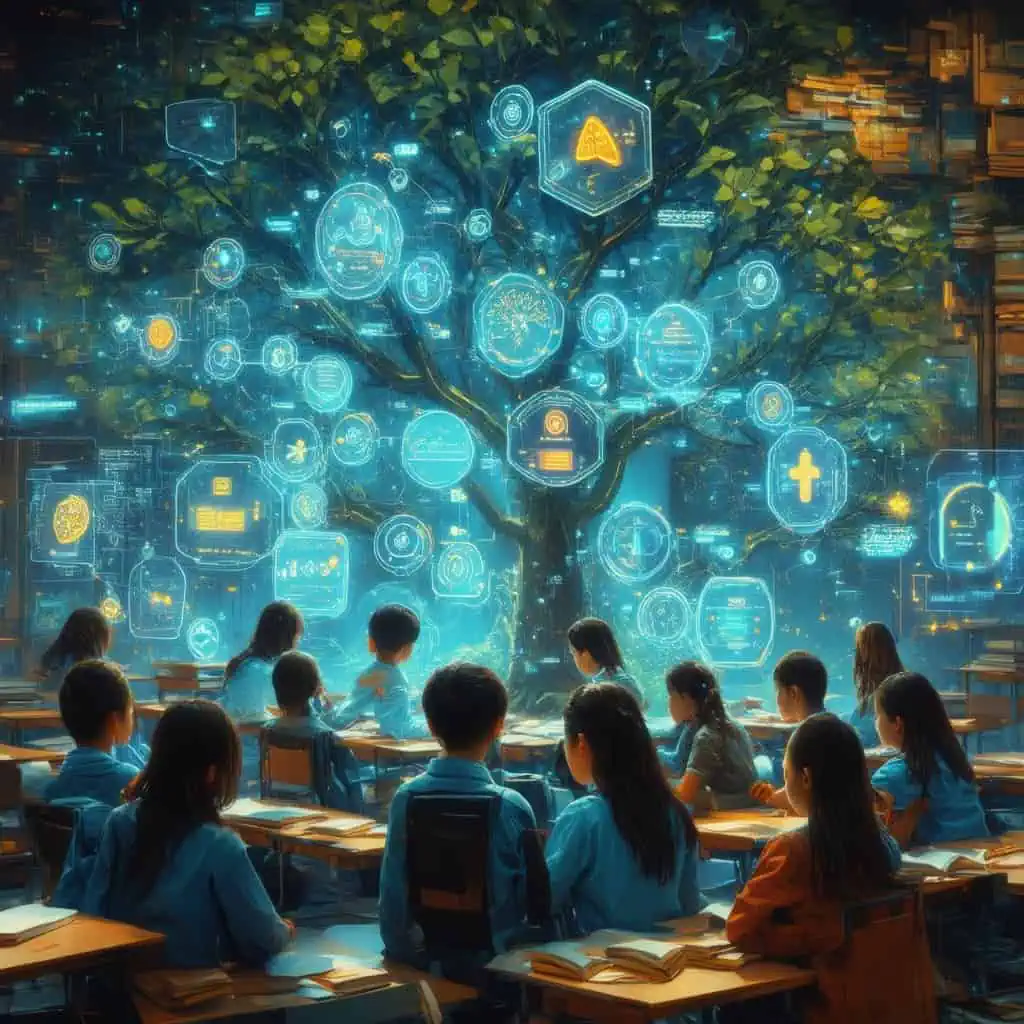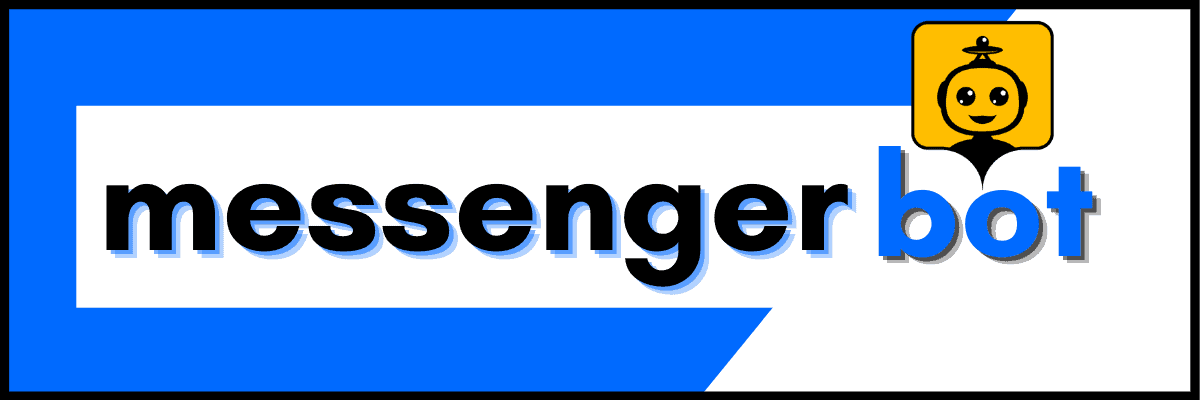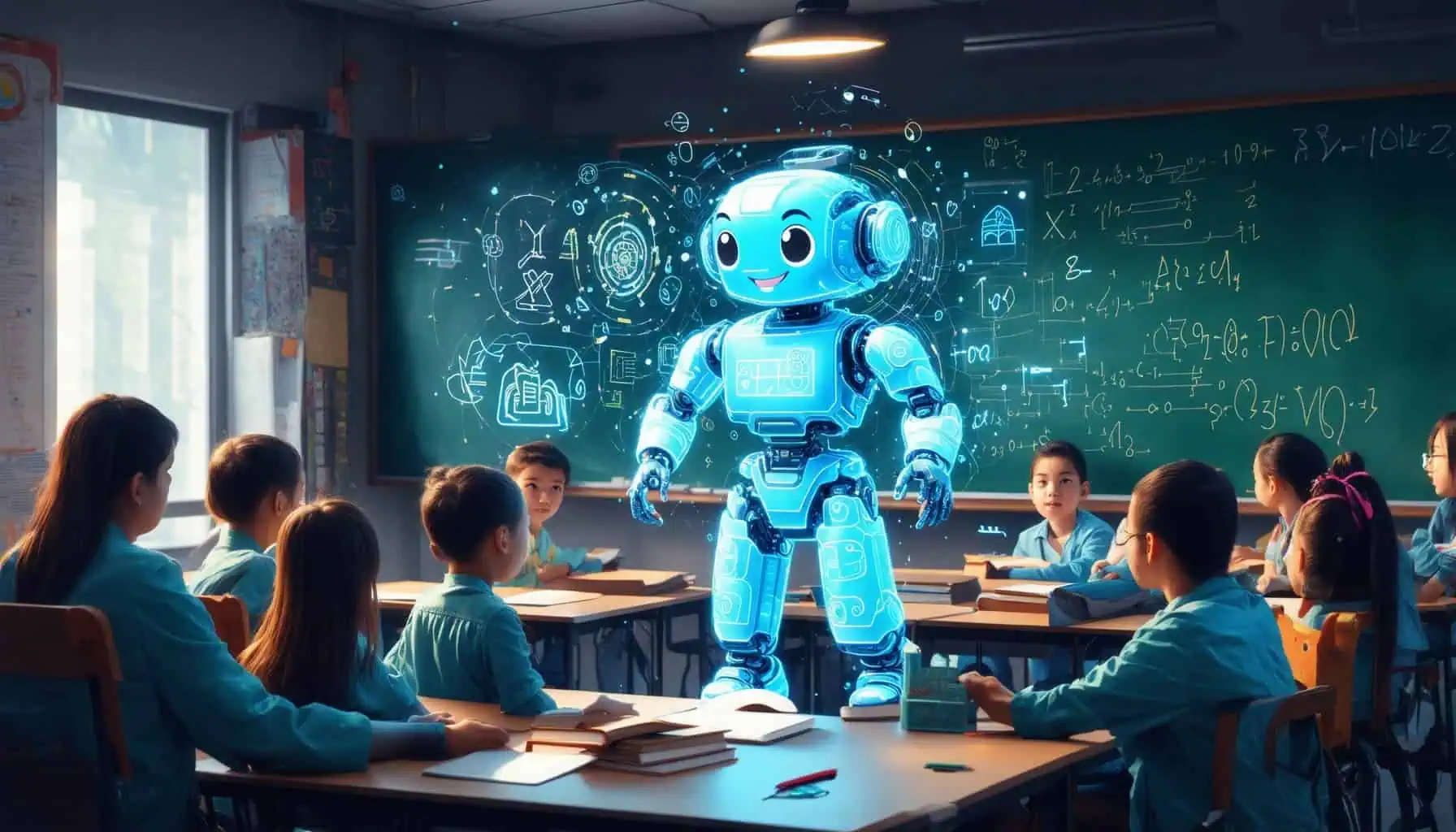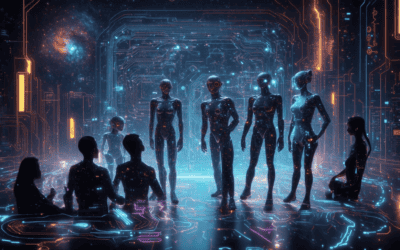Key Takeaways
- Transformative Role: Chatbots in education enhance student engagement and learning through personalized support and immediate assistance.
- Accessibility: 24/7 availability of chatbots breaks down barriers, making educational resources accessible anytime, anywhere.
- Data-Driven Insights: Chatbots provide valuable analytics on student behavior, aiding educators in refining teaching strategies and improving outcomes.
- Cost-Effective Solutions: Implementing chatbots can reduce administrative workloads, allowing institutions to allocate resources more efficiently.
- Ethical Considerations: Addressing data privacy and bias is crucial for ensuring equitable learning opportunities and maintaining student trust.
- Future Potential: Chatbots will increasingly collaborate with educators, enhancing the overall educational experience without replacing the human touch in teaching.
In today’s rapidly evolving educational landscape, the integration of chatbots in education is transforming the way students and educators interact. This article, titled Exploring the Impact of Chatbots in Education: Benefits, Ethical Concerns, and Future Prospects, delves into the multifaceted role of chatbots for education, highlighting their potential benefits, ethical considerations, and future implications. We will explore key topics such as the best educational chatbot options available, the transformative effects of AI chatbots for education, and the limitations that accompany their use. Additionally, we will address pressing ethical concerns, including privacy issues and bias in educational chatbots, while providing practical insights on how to effectively implement these tools in learning environments. As we navigate through these critical discussions, we aim to uncover whether chatbots in education could eventually replace traditional teaching methods or serve as a complementary resource. Join us as we examine current trends and research surrounding chatbots for learning and their impact on the future of education.
What is the best educational chatbot?
The best educational chatbot currently available is Jamworks’ AI Tutor, which stands out as a leading AI chatbot specifically designed for higher education. This innovative tool enhances the learning experience by providing personalized tutoring, answering student queries in real-time, and facilitating interactive learning sessions.
Chatbot in education examples
Jamworks’ AI Tutor exemplifies the capabilities of chatbots in education. Key features of Jamworks’ AI Tutor include:
- Personalized Learning: The AI Tutor adapts to individual learning styles and paces, offering tailored resources and support to enhance student understanding.
- Real-Time Assistance: Students can receive immediate help with their questions, making it a valuable resource for homework and study sessions.
- Integration with Educational Tools: Jamworks seamlessly integrates with various educational platforms, allowing for a cohesive learning environment.
- Data-Driven Insights: The chatbot utilizes analytics to track student progress and engagement, providing educators with valuable insights to improve teaching strategies.
- User-Friendly Interface: Designed with students in mind, the interface is intuitive and easy to navigate, ensuring a smooth user experience.
For further reading on the effectiveness of educational chatbots, refer to studies published by the International Journal of Artificial Intelligence in Education and the Journal of Educational Technology & Society, which highlight the positive impact of AI-driven tools in enhancing student engagement and learning outcomes.
Free chatbot for education
For those seeking a cost-effective solution, there are several free chatbots for education available. These platforms offer essential features that can help educators and students alike:
- Basic Tutoring Functions: Many free chatbots provide fundamental tutoring capabilities, allowing students to ask questions and receive answers.
- Interactive Learning Modules: Some platforms include interactive quizzes and learning modules that engage students in a fun and educational manner.
- Accessibility: Free chatbots often come with easy integration options, making them accessible for various educational settings.
- Community Support: Users of free chatbots can benefit from community forums where they can share experiences and tips.
By leveraging these free resources, educational institutions can enhance their teaching methods and provide additional support to students without incurring significant costs.

How Will Chatbots Change Education?
Chatbots are revolutionizing education by transforming the learning experience through several key advancements:
- Immediate Assistance: Chatbots provide instant responses to student inquiries, enhancing engagement and reducing wait times for help. This immediacy supports a more interactive learning environment, allowing students to seek clarification on concepts in real-time.
- Personalized Learning: By analyzing individual student performance and preferences, chatbots can deliver customized feedback and resources. This tailored approach accommodates diverse learning styles and paces, ensuring that all students receive the support they need to succeed.
- Accessibility: Chatbots break down barriers to education by offering 24/7 support, making learning resources available anytime, anywhere. This is particularly beneficial for students in remote areas or those with varying schedules, promoting inclusivity in education.
- Data-Driven Insights: Educators can leverage data collected by chatbots to gain insights into student behavior and learning patterns. This information can inform instructional strategies and curriculum development, leading to improved educational outcomes.
- Engagement and Motivation: Interactive chatbots can gamify learning experiences, making education more engaging. Features such as quizzes, challenges, and rewards can motivate students to participate actively in their learning journey.
- Cost-Effectiveness: Implementing chatbots can reduce the need for extensive human resources, allowing educational institutions to allocate funds more efficiently. This cost-saving measure can lead to enhanced educational services without compromising quality.
Recent studies highlight the effectiveness of chatbots in education. For instance, a report by the International Society for Technology in Education (ISTE) emphasizes the role of AI in personalizing learning experiences (ISTE, 2022). Furthermore, research published in the Journal of Educational Technology & Society indicates that chatbots can significantly improve student satisfaction and learning outcomes (JETS, 2023).
In conclusion, chatbots are poised to significantly change the educational landscape by enhancing accessibility, personalization, and engagement, ultimately leading to a more effective learning environment for all students.
Role of Chatbot in Education
The role of chatbots in education extends beyond simple question-and-answer interactions. They serve as versatile tools that can facilitate various educational processes:
- Administrative Support: Chatbots can assist with administrative tasks such as enrollment, scheduling, and answering frequently asked questions, freeing up educators to focus on teaching.
- Learning Reinforcement: By providing additional resources and practice materials, chatbots can reinforce learning outside of traditional classroom hours, helping students to master concepts at their own pace.
- Peer Interaction: Chatbots can simulate peer interactions, allowing students to engage in discussions and collaborative learning experiences, which are essential for developing critical thinking skills.
For more insights on how chatbots can be integrated into educational settings, check out our guide on Understanding AI Chatbots in Education.
What are the disadvantages of chatbots in education?
While chatbots in education offer numerous benefits, they also present several disadvantages that can impact both teaching and learning experiences. Understanding these limitations is crucial for educators and institutions considering the integration of chatbots for education.
AI chatbot in education
The disadvantages of AI chatbots in education include several critical challenges:
- Limited Interaction: Chatbots often lack the ability to engage in nuanced conversations. Unlike human educators, they may struggle to understand context, tone, and emotional cues, leading to a less personalized learning experience. This limitation can hinder student engagement and motivation.
- Misleading Answers: Chatbots can provide inaccurate or misleading information, particularly if they are not programmed with up-to-date or comprehensive knowledge. This can lead to confusion among learners, especially in complex subjects where precise information is crucial.
- Originality and Plagiarism Concerns: The use of chatbots can raise issues regarding originality in student work. Students may rely too heavily on chatbot-generated content, leading to potential plagiarism and a lack of critical thinking skills. This reliance can undermine the educational process and diminish the value of independent learning.
- Technical Limitations: Many chatbots may not be equipped to handle diverse learning styles or adapt to individual student needs. This can result in a one-size-fits-all approach that fails to accommodate different learning paces and preferences.
- Data Privacy Issues: The integration of chatbots in educational settings raises concerns about data privacy and security. Student interactions with chatbots may be stored and analyzed, leading to potential breaches of confidentiality and ethical considerations regarding data usage.
- Dependence on Technology: Over-reliance on chatbots can lead to a diminished role for human educators, potentially reducing the quality of interpersonal interactions that are vital for effective learning. This shift may also impact the development of social skills among students.
In conclusion, while chatbots for learning can enhance educational experiences, it is essential to address these disadvantages to ensure they complement rather than replace traditional teaching methods. Educators must carefully consider the implementation of chatbots to maximize their benefits while mitigating potential drawbacks.
Chatbot education limitations
Understanding the limitations of chatbots in education is vital for effective implementation. Here are some key points to consider:
- Inflexibility: Chatbots may not adapt well to unexpected questions or topics outside their programmed knowledge base, which can frustrate users seeking assistance.
- Emotional Intelligence: The lack of emotional intelligence in chatbots can lead to misunderstandings in sensitive situations, where human empathy is crucial.
- Resource Allocation: Institutions may allocate resources to chatbot development that could be better spent on enhancing human educator training and support.
- Integration Challenges: Implementing chatbots within existing educational frameworks can be complex, requiring significant time and effort to ensure compatibility with current systems.
By recognizing these limitations, educators can make informed decisions about how to effectively integrate chatbots in education while maintaining a balance between technology and traditional teaching methods.
What are the ethical concerns around AI and chatbot in education?
The ethical concerns surrounding Artificial Intelligence (AI) and chatbots in education are multifaceted and warrant careful consideration. Here are the key areas of concern:
Privacy issues with chatbots in education
One of the primary ethical concerns regarding chatbots in education is privacy and data security. The use of AI in educational settings often involves the collection of sensitive student data, raising significant concerns about how this information is stored and used. Institutions must ensure compliance with regulations such as FERPA (Family Educational Rights and Privacy Act) to protect student privacy. Failure to do so can lead to misuse of personal information, which can have serious implications for students and educators alike.
Moreover, as educational chatbots collect data to personalize learning experiences, there is a risk of exposing students to data breaches or unauthorized access. It is essential for educational institutions to implement robust data protection measures and maintain transparency about how student data is utilized. This not only builds trust with students and parents but also aligns with ethical standards in education.
Bias in educational chatbots
Another critical ethical concern is the potential for bias in educational chatbots. AI systems can inadvertently perpetuate bias, influenced by the data they are trained on. For instance, an AI tutoring system may favor students from certain backgrounds or demographics, leading to unequal learning opportunities. Research indicates that biased algorithms can result in significant disparities in educational outcomes, which can hinder the effectiveness of chatbots for education.
To mitigate bias, developers of educational chatbots must prioritize fairness in their algorithms and ensure diverse data representation during the training process. Continuous monitoring and evaluation of AI systems are necessary to identify and rectify any biases that may arise. By addressing these issues, we can work towards creating more equitable educational environments that benefit all students.

How to Use Chatbot in Education?
Implementing chatbots in education can significantly enhance the learning experience by providing personalized support and streamlining communication. Here are effective strategies for utilizing chatbots for learning:
Implementing Chatbots for Learning
Educational chatbots are transforming the learning experience by providing interactive and personalized support. Here’s how they can be effectively utilized in education:
- Answering Student Questions: Chatbots can provide instant responses to frequently asked questions, allowing students to receive immediate assistance outside of classroom hours. This accessibility enhances learning by reducing wait times for information.
- Explaining Tough Topics: Chatbots can break down complex subjects into simpler concepts, offering explanations tailored to individual learning styles. For example, they can provide step-by-step solutions to math problems or summarize key points from a lecture.
- Giving Reminders About Assignments: By integrating with learning management systems, chatbots can send automated reminders about upcoming deadlines, helping students stay organized and manage their time effectively.
- Helping Teachers Manage Their Workload: Chatbots can assist educators by automating administrative tasks such as grading quizzes or tracking student progress. This allows teachers to focus more on instruction and less on paperwork.
- Facilitating Peer Interaction: Chatbots can encourage collaboration among students by facilitating group discussions or study sessions, fostering a sense of community and enhancing peer learning.
- Providing Personalized Learning Experiences: Advanced chatbots utilize artificial intelligence to adapt to each student’s learning pace and preferences, offering customized resources and feedback that cater to individual needs.
- Collecting Feedback: Chatbots can gather student feedback on courses and teaching methods, providing educators with valuable insights to improve their instructional strategies.
According to a study published in the Journal of Educational Technology & Society, the use of chatbots in educational settings has been shown to enhance student engagement and satisfaction (Kumar & Rose, 2020). By leveraging these capabilities, educational institutions can create a more dynamic and supportive learning environment.
Best Practices for Education Chatbots
To maximize the effectiveness of chatbots for education, consider the following best practices:
- Define Clear Objectives: Establish specific goals for what the chatbot should achieve, whether it’s answering questions, providing resources, or facilitating communication.
- Ensure User-Friendly Design: Create an intuitive interface that allows students and educators to interact with the chatbot easily, enhancing user experience.
- Regularly Update Content: Keep the chatbot’s knowledge base current by regularly updating information and resources to reflect changes in curriculum or policies.
- Monitor Performance: Use analytics to track the chatbot’s interactions and effectiveness, making adjustments based on user feedback and engagement metrics.
- Integrate with Existing Systems: Ensure the chatbot works seamlessly with existing educational technologies, such as learning management systems, to provide a cohesive experience.
By following these best practices, educational institutions can effectively implement chatbots in education, enhancing both teaching and learning experiences.
Will Chatbots Replace Teachers?
The question of whether chatbots will replace teachers is complex and multifaceted. While chatbots and AI technologies are increasingly being integrated into educational settings, they are unlikely to fully replace human teachers. Here are several key points to consider:
- Role of Human Interaction: Education is fundamentally about human connection. Teachers provide emotional support, mentorship, and inspiration that chatbots cannot replicate. According to a study published in the Journal of Educational Psychology, positive teacher-student relationships significantly enhance student learning outcomes (Roorda et al., 2011).
- Personalized Learning: Chatbots can assist in personalizing learning experiences by providing tailored resources and feedback. For instance, AI-driven platforms can analyze student performance data to suggest customized learning paths. However, the nuanced understanding of a student’s emotional and social needs remains a human domain.
- Supplementary Tools: Chatbots can serve as valuable supplementary tools in the classroom. They can handle administrative tasks, answer frequently asked questions, and provide additional resources, allowing teachers to focus more on interactive and engaging teaching methods. A report from the Brookings Institution highlights how AI can enhance educational efficiency without replacing the teacher’s role (West, 2019).
- Limitations of AI: While chatbots can simulate conversation and provide information, they lack the ability to understand context, emotions, and complex human interactions. Research from Stanford University emphasizes that AI lacks the empathy and ethical reasoning that are crucial in education (Davenport & Ronanki, 2018).
- Future of Education: The future of education will likely involve a hybrid model where AI tools, including chatbots, support teachers rather than replace them. This approach can lead to more effective teaching strategies and improved student engagement.
In conclusion, while chatbots and AI technologies will play an increasingly significant role in education, they will not replace teachers. Instead, they will enhance the educational experience by providing support and resources, allowing teachers to focus on what they do best: inspiring and guiding students.
The Future of Chatbots in Education
As we look ahead, the integration of chatbots in education is expected to evolve significantly. Educational chatbots are becoming more sophisticated, leveraging advancements in AI and natural language processing to provide more meaningful interactions. Here are some trends shaping the future of chatbots in education:
- Enhanced Learning Experiences: Chatbots will increasingly be designed to facilitate interactive learning experiences, helping students engage with content in a more dynamic way. For example, chatbots can provide instant feedback on quizzes and assignments, fostering a more responsive learning environment.
- Increased Accessibility: With the ability to communicate in multiple languages and provide support 24/7, chatbots can make education more accessible to diverse student populations. This capability is particularly beneficial in global learning environments where students may face language barriers.
- Data-Driven Insights: The use of chatbots will enable educators to gather valuable data on student interactions and learning patterns. This information can be used to refine teaching strategies and improve curriculum design, ultimately enhancing educational outcomes.
- Collaboration with Educators: Future chatbots will likely work alongside teachers, providing them with insights and resources that can enhance their teaching methods. This collaboration can lead to a more integrated approach to education, where technology and human expertise complement each other.
In summary, while chatbots will not replace teachers, their role in education will continue to grow, providing valuable support and enhancing the overall learning experience.
Chatbot in Education Research Paper
Research on the chatbot in education landscape reveals significant advancements and applications that enhance learning experiences. Educational institutions are increasingly adopting chatbots for education to facilitate communication, provide instant support, and personalize learning. This section explores current trends in educational chatbots and highlights relevant case studies that showcase their effectiveness.
Current Trends in Educational Chatbots
As technology evolves, the integration of chatbots in education continues to grow. Some notable trends include:
- Personalized Learning: Chatbots are being designed to adapt to individual learning styles, offering tailored resources and support. This personalization enhances student engagement and retention.
- 24/7 Availability: With chatbots, students can access assistance anytime, breaking down barriers associated with traditional office hours. This constant availability fosters a more supportive learning environment.
- Multilingual Support: Many educational chatbots now offer multilingual capabilities, allowing institutions to cater to diverse student populations. This feature is crucial for global education initiatives.
- Integration with Learning Management Systems (LMS): Chatbots are increasingly being integrated into LMS platforms, streamlining communication between students and educators while providing easy access to course materials.
These trends indicate a shift towards more interactive and responsive educational environments, where chatbots for learning play a pivotal role.
Case Studies on Chatbots for Education
Several institutions have successfully implemented educational chatbots, demonstrating their potential impact:
- Georgia State University: This university utilized a chatbot to assist students with enrollment processes, resulting in a 22% increase in student retention rates. The chatbot provided timely information and reminders, significantly improving student engagement.
- Duolingo: The language-learning platform employs chatbots to facilitate conversational practice. Users interact with the bot to enhance their language skills, receiving instant feedback that aids in their learning journey.
- University of Toronto: Implementing a chatbot for student services, the university reported a 30% reduction in administrative workload. The chatbot efficiently handled common inquiries, allowing staff to focus on more complex student needs.
These case studies illustrate the transformative potential of chatbots in education, showcasing how they can enhance learning outcomes and operational efficiency. For more insights on implementing chatbots, explore our guide on setting up your first AI chatbot.




